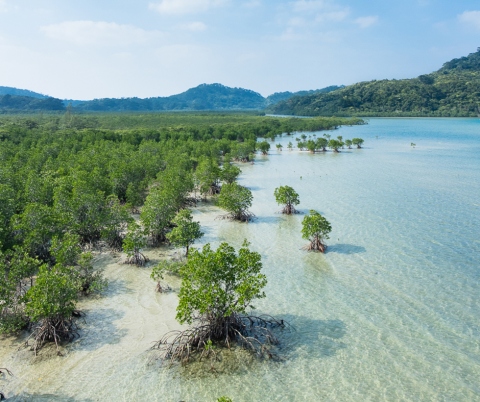Ocean Evidence Gap Map (2020-2021)
Evidence gap maps and syntheses are emerging tools within the conservation field. They are useful tools to creatively review existing scientific research in order to help guide evidence-based decision-making and identify areas where more targeted research is needed. Gap maps describe the distribution of studies that suggest linkages between particular interventions and outcomes, highlighting key evidence needs and areas where sufficient evidence could exist.
This project team tested the efficacy of machine learning to aid literature reviews and created tangible results for the World Wildlife Fund (WWF) through an evidence gap map. Through the machine-learning software Colandr, team members conducted in-depth literature reviews on social-ecological outcomes of conservation interventions in tropical coastal coral, seagrass and mangrove ecosystems.
Timing
Summer 2020 – Summer 2021
Team Outputs
Impacts of Conservation Interventions in Marine Ecosystems (2021 Fortin Foundation Bass Connections Virtual Showcase)
Ocean Evidence Gap Map (poster by David Gill, Lisa Campbell, Morgan Rudd, Juliette Lee, Nora Ives, Flo Cordova-Dickerson)
This Team in the News
Evaluating Education Programs for Marine Conservation
Quartet of High Achievers Take Home 2022 Outstanding Undergraduate Awards
Meet the Winners of the 2021 Bass Connections Student Research Awards
See related teams, Ocean Evidence Gap Map (2021-2022) and Ocean Evidence Gap Map and Synthesis (2019-2020).
Image: Large mangrove forest along Urauchi River in Iriomote Island of the Yaeyama Islands, Okinawa, Japan, by Anagounagi, licensed under CC BY-SA 4.0

Team Leaders
- Lisa Campbell, Nicholas School of the Environment-Marine Science and Conservation
- David Gill, Nicholas School of the Environment-Marine Science and Conservation
/graduate Team Members
-
Claire Huang, Master of Environmental Management, Coastal Environmental Management
-
Elinor Ives, Master of Environmental Management, Coastal Environmental Management
-
Juliette Lee, Master of Environmental Management, Coastal Environmental Management
-
Lisa Myles, Master of Environmental Management, Coastal Environmental Management
-
Nadia Swit, Master of Environmental Management, Water Resources Management
/undergraduate Team Members
-
Floreana Cordova-Dickerson, Environmental Sciences (BS)
-
Madeleine Paris, Biology (BS)
-
Morgan Pruchniewski, Statistical Science (BS)
/yfaculty/staff Team Members
-
Brian Silliman, Nicholas School of the Environment-Marine Science and Conservation
/zcommunity Team Members
-
Gabby Ahmadia, World Wildlife Fund-US
-
Samantha Cheng, World Wildlife Fund
